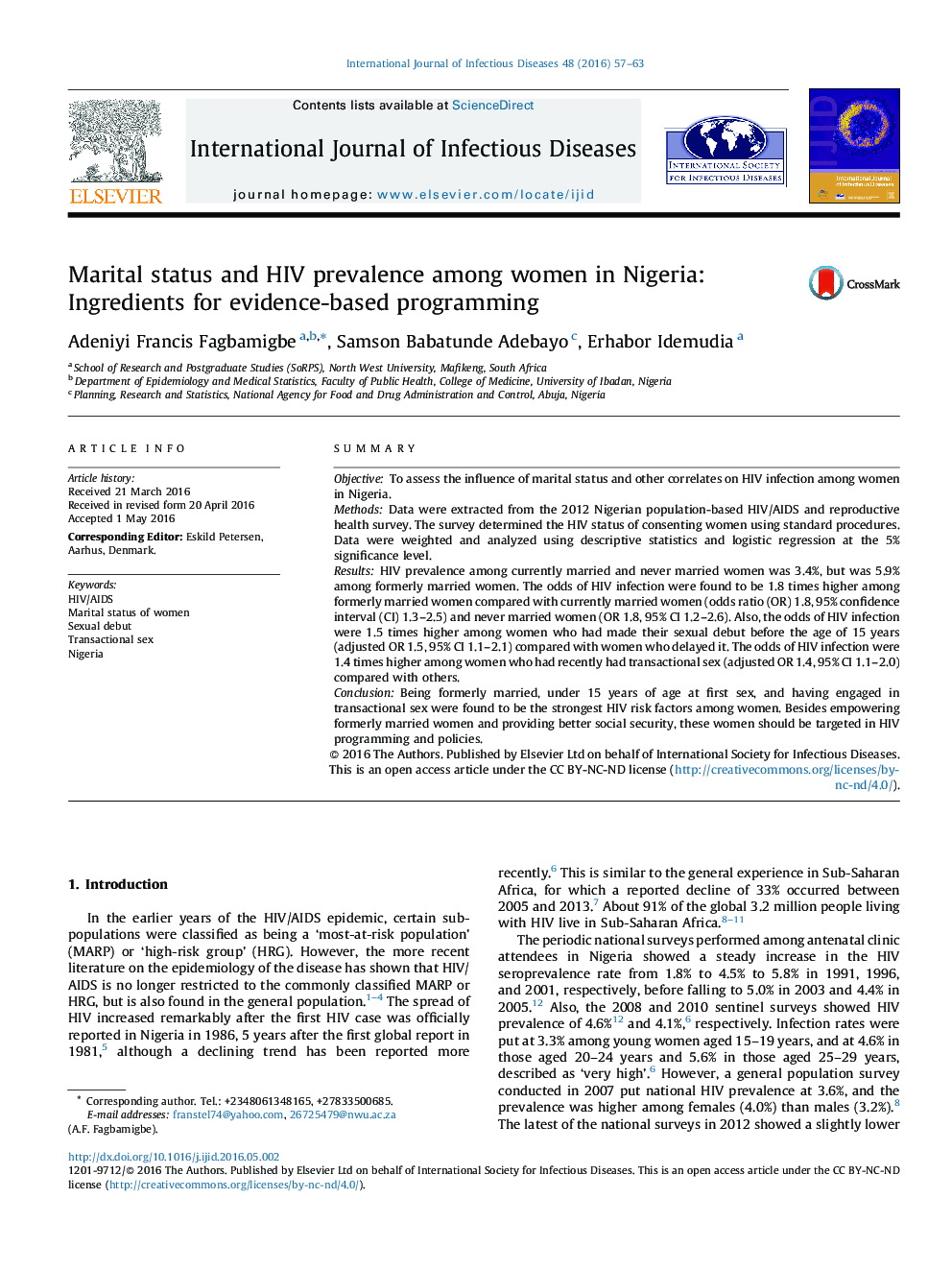| Article ID | Journal | Published Year | Pages | File Type |
|---|---|---|---|---|
| 3361719 | International Journal of Infectious Diseases | 2016 | 7 Pages |
•The influence of marital status on HIV prevalence was assessed among women in Nigeria.•The odds of HIV infection were twice as high among formerly married women as among the other women.•Early sexual debut and transactional sex were risk factors for HIV infection.•Contraceptive use and HIV prevention and transmission knowledge were insignificant.•The formerly married may become a ‘most-at-risk group’ if not attended to in HIV policies.
SummaryObjectiveTo assess the influence of marital status and other correlates on HIV infection among women in Nigeria.MethodsData were extracted from the 2012 Nigerian population-based HIV/AIDS and reproductive health survey. The survey determined the HIV status of consenting women using standard procedures. Data were weighted and analyzed using descriptive statistics and logistic regression at the 5% significance level.ResultsHIV prevalence among currently married and never married women was 3.4%, but was 5.9% among formerly married women. The odds of HIV infection were found to be 1.8 times higher among formerly married women compared with currently married women (odds ratio (OR) 1.8, 95% confidence interval (CI) 1.3–2.5) and never married women (OR 1.8, 95% CI 1.2–2.6). Also, the odds of HIV infection were 1.5 times higher among women who had made their sexual debut before the age of 15 years (adjusted OR 1.5, 95% CI 1.1–2.1) compared with women who delayed it. The odds of HIV infection were 1.4 times higher among women who had recently had transactional sex (adjusted OR 1.4, 95% CI 1.1–2.0) compared with others.ConclusionBeing formerly married, under 15 years of age at first sex, and having engaged in transactional sex were found to be the strongest HIV risk factors among women. Besides empowering formerly married women and providing better social security, these women should be targeted in HIV programming and policies.
